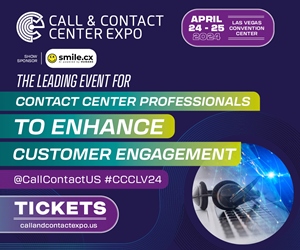
Malene Wessel explains how to measure the success of your live chat solution.
Live chat used to be considered a “nice to have” website feature. Today it’s expected by customers. In fact, Forrester found that 73% of consumers say good online customer service is most important to them. With this in mind, it’s important to monitor the success of your live chat solution to ensure quality service. But, how do you do this? Here are the metrics that you should track and what they will tell you about the success of your live chat solution. This information will help you maintain and improve chat service levels.
Click rate is measured by using the Visits per page (offering chat) and dividing it by Clicks (the number of chat button clicks on that page). The resulting figure helps measure engagement per page. If engagement is too low, you may benefit from adding proactive chat messages on the page to increase visitor engagement. If the rate is too high, it may mean that visitors are encountering problems or are unable to find important information. In this case, look at chat transcripts. You may identify new topics to add to your knowledge base or FAQs.
Number of chats is measured in a number of ways. Answered chats versus unanswered chats while agents are on duty are indicators of the availability and efficiency of chat operators. Higher volumes can be a wonderful opportunity to address customer concerns and questions but you want to be sure all chats are being answered to ensure customer satisfaction. Looking at chat transcripts should reveal the cause for increased volumes. This way you’ll know if additional staff training is needed or if scheduling needs to be adjusted to meet higher demands.
Offline requests occur when customers click the chat button when there is no operator online. If this happens frequently during certain times of day, it may indicate a need to adjust agent schedules to accommodate increased chat hours. Another potential solution could be the addition of a chatbot for 24 hour service relating to common questions. If there are common inquiries that are generated through offline requests, a chatbot would be able to direct these customers to the appropriate resources.
Response time is an important criteria when measuring the effectiveness of chat agents. In fact it’s best if operators respond to chat requests within 30 seconds. This minimizes abandoned chats and increases customer satisfaction.
Average chat length reveals how much time agents take to complete each chat session. Short chats may indicate they are rushed and long chats may tell you that they’re too chatty or disorganized. Average chat duration should be long enough to get straight to the point and solve problems. They should not be going off-topic when communicating with customers. Of course, a reasonable average chat length goal will vary based on department and complexity of issues encountered.
Returning customers who have an issue that wasn’t resolved during a previous chat, may be an indication that a chat agent needs some additional training. Your goal is to reach resolution during a customer’s first contact.
First contact resolution rate can make all the difference when it comes to customer retention. It’s not uncommon for those who don’t receive first contact resolution (FCR) to switch to another brand due to dissatisfaction. The average FCR for live chat should be 66-76%. If yours is below this level it could be an indication that your agents require additional training. If not, it may be a case where they don’t have all the resources they need to answer all customer queries.
Escalated Chats may be an indication that an agent needs additional product/service knowledge or soft skills training. It’s important to keep transfers to supervisors or senior agents to a minimum to avoid negatively impacting customer satisfaction ratings. Plus, if you have team chatroom capabilities, this may be a way to reduce these while newer agents continue to learn.
Customer Feedback is invaluable data that is easily collected by most chat applications through survey features. With this information, it’s easy to identify chat operators providing exceptional service as well as those who are falling short. It also reveals just how satisfied your customers are and how likely they are to return to your company with their future needs.
Tracking these key metrics will help you assess the success of your live chat solution. Armed with this information you’ll be able to consistently monitor customer satisfaction, agent performance and overall support workflow. Plus, it will be easier to identify areas needing improvement. Why not start collecting this data today to ensure the best results from your live chat solution?
About the Author
Malene Wessel is Head of Marketing at Live Guide Chat. For more information on how live chat can help companies increase sales and customer satisfaction while reducing their service costs visit liveguidechat.com




